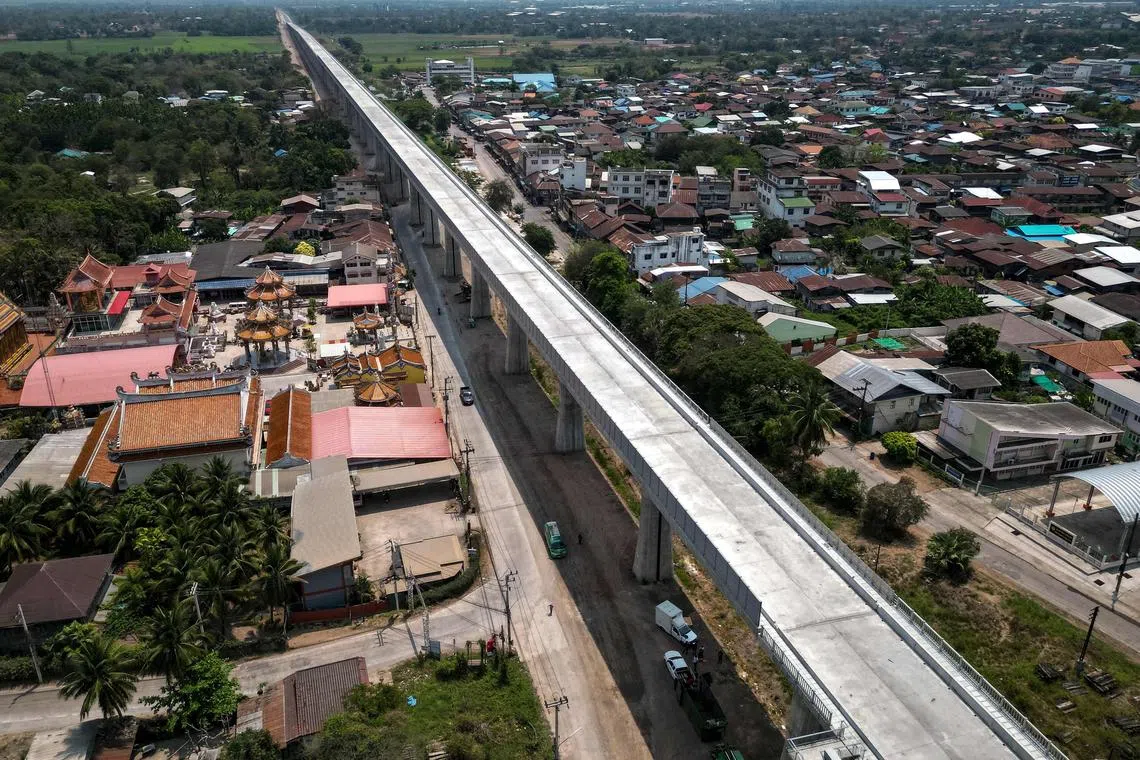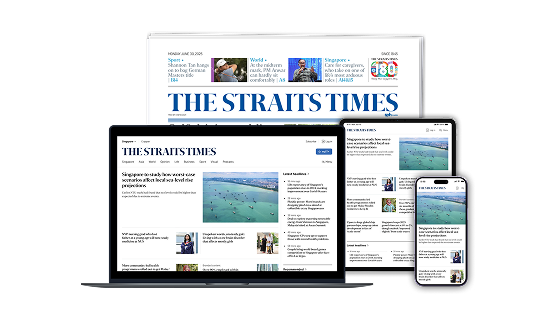For subscribers
Ports, politics and peace: The engineering of stability
Infrastructure shapes global leverage, forging interdependence in ways both subtle and stark.
Sign up now: Get ST's newsletters delivered to your inbox

An aerial photo taken on March 29, 2023, showing an elevated track, still under construction as part of the Thai-Chinese Bangkok-Nong Khai high-speed railway project, in Nakhon Ratchasima province.
PHOTO: AFP
Guru Madhavan
Follow topic:
Civilisations don’t rise and fall by the sword alone. They are shaped – or shattered – by the infrastructure that anchors their networks. Infrastructure can foster peace and stability, but history shows it has also been a medium for influence. India’s ancient ports made this clear: the sea wasn’t just a barrier but a conduit for empires to expand, where mutual exchange and leverage coexisted.
On Tamil Nadu’s Coromandel Coast, Poompuhar (Kaveripoompattinam) flourished as a major port during the Sangam era (300 BCE to 300 CE). More than a trading hub, it was an engineered enclave of commerce, culture and command, part of a maritime meshwork that linked South India to distant shores, weaving coastal economies into vast trade routes.

